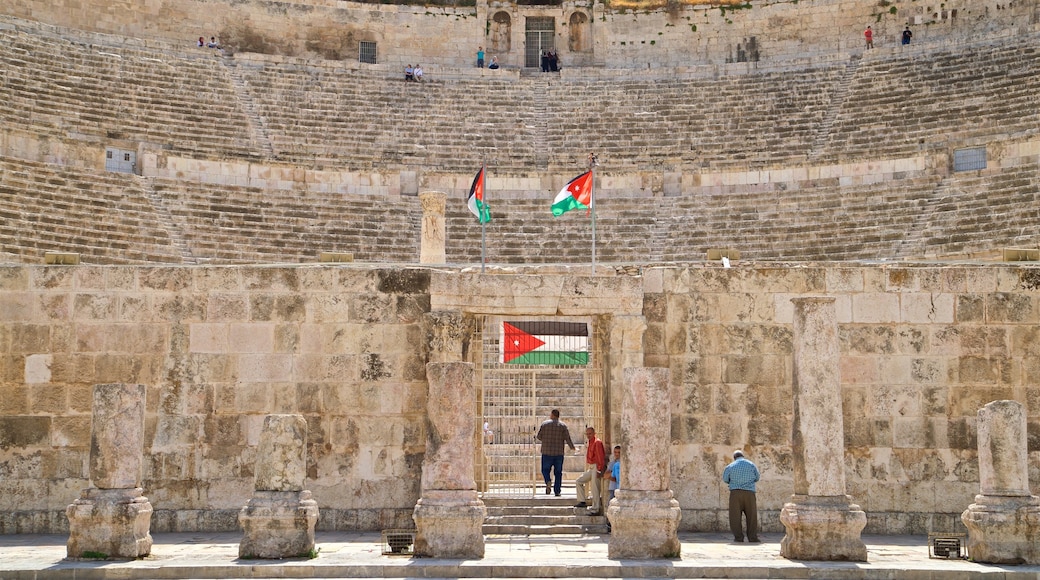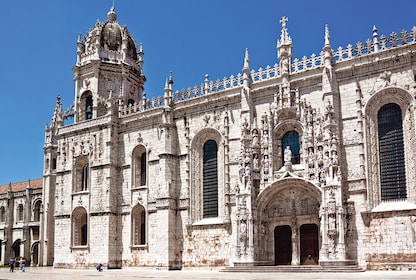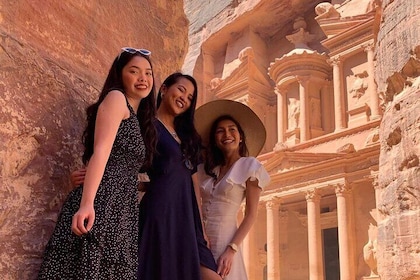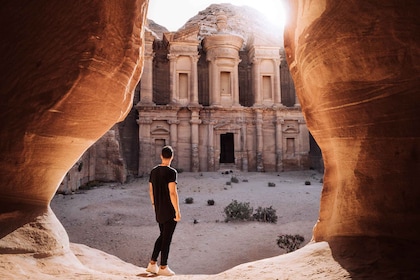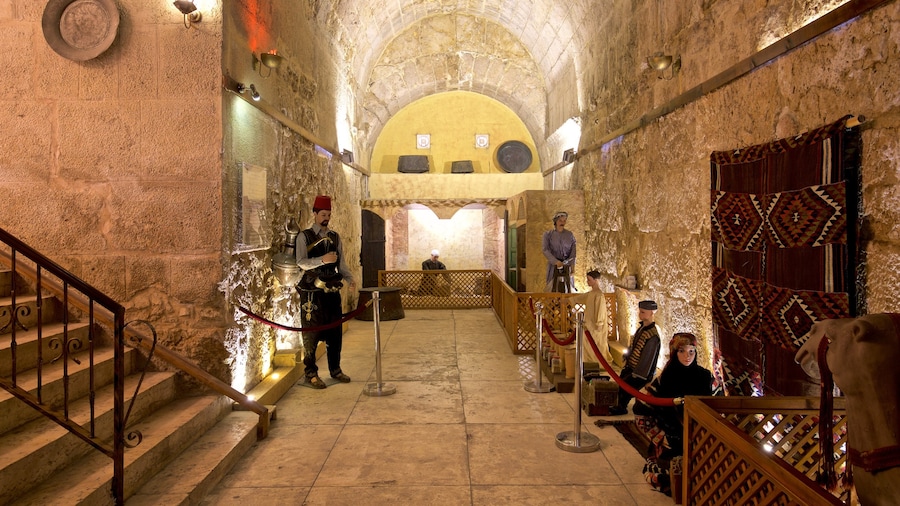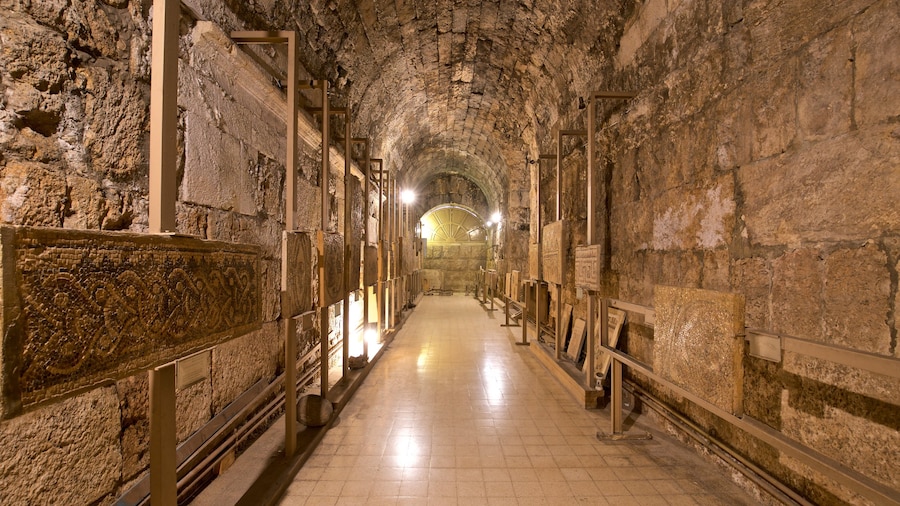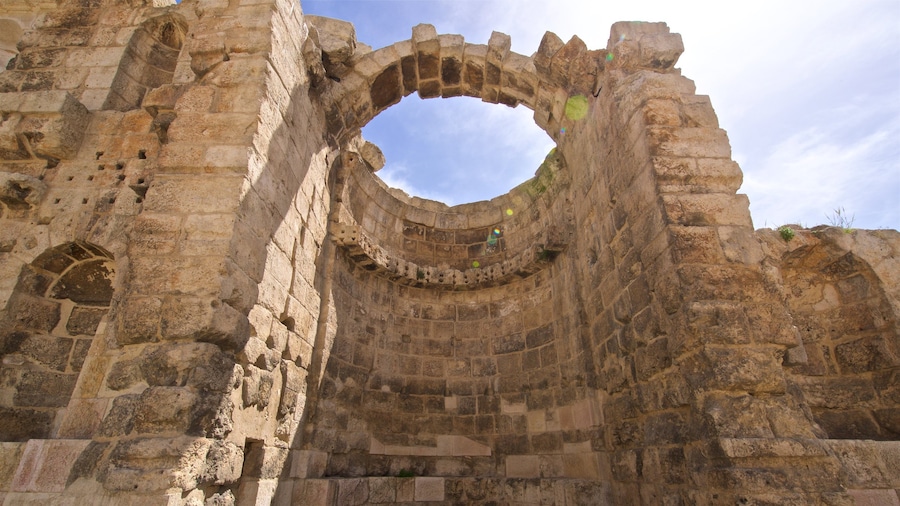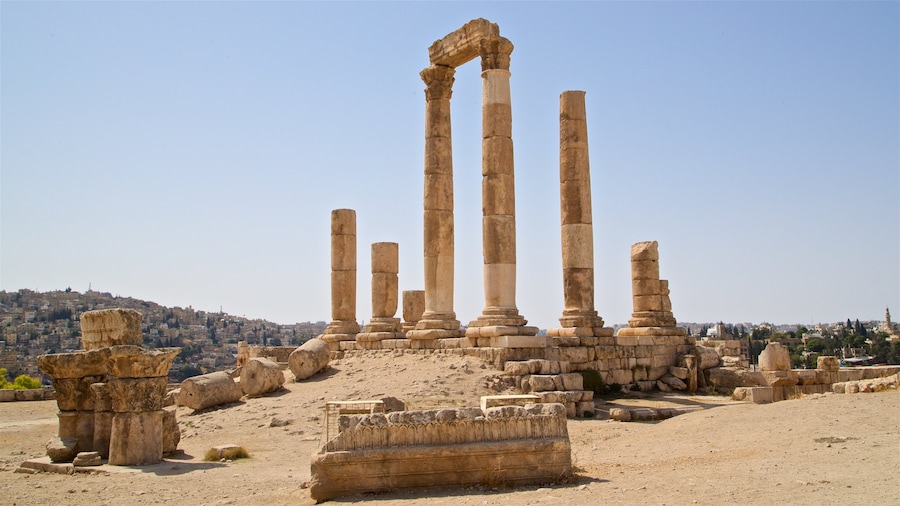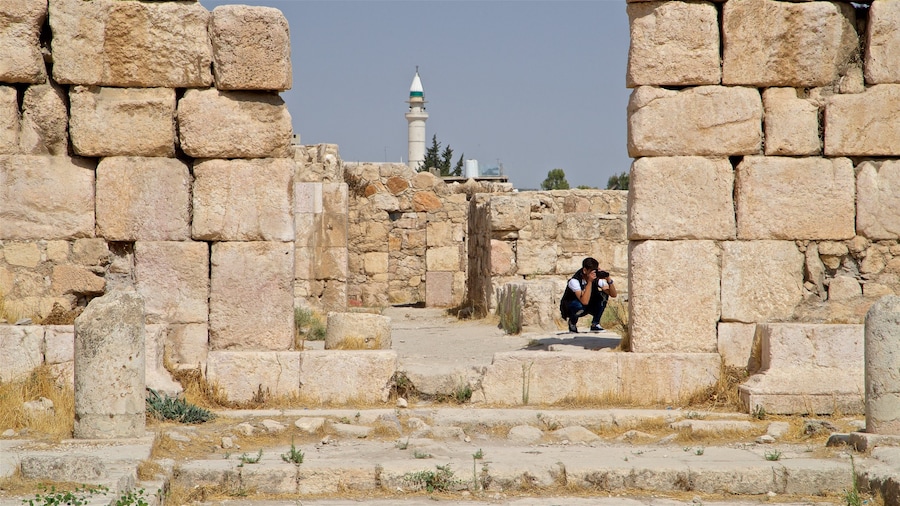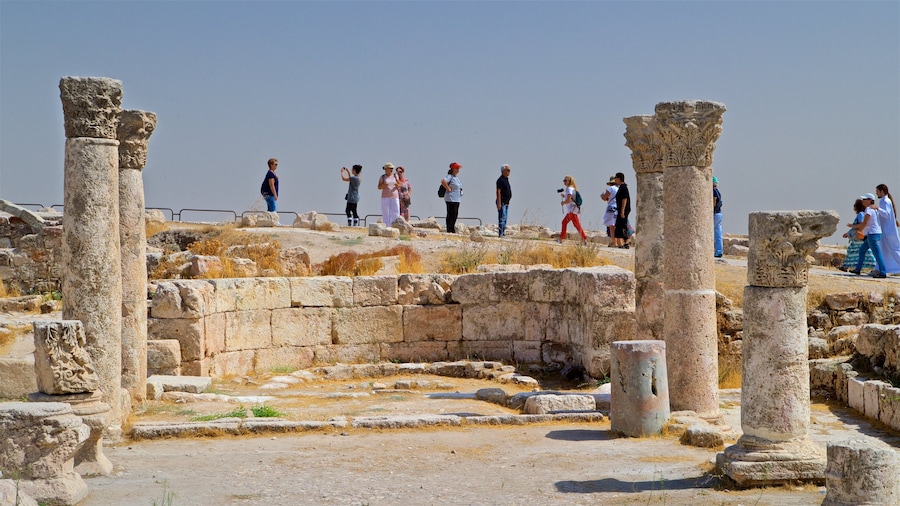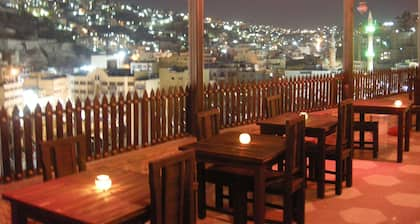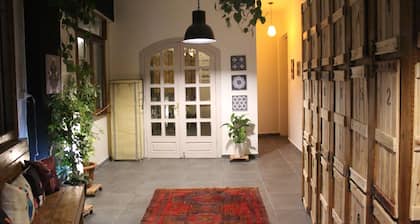The Roman Theatre is one of the most impressive attractions in Amman. The, steeply raked amphitheatre features incredible acoustics, an ingenious design and a seating capacity for approximately 6,000 people. It’s easy to be awed by the sheer immensity of the space and the thought of crowds gathering here nearly 2,000 years ago.
The Roman influence in Amman is everywhere you look. The walk to the amphitheatre will take you along the remains of a Roman street and past the Corinthian colonnade. In the fourth century, a marketplace was held here between the theatre and the street.
It is believed that the Roman Theatre was built in the second century during the reign of Antoninus Pius. The theatre is built into the northern face of a hill. This means it has an ideal orientation for light during the day the sunlight hits the stage but is kept out of the eyes of the spectators.
Walk through the side entrances into the orchestra and onto the stage. Stand in the middle of the stage and hear your voice resound across the auditorium. The amphitheatre’s acoustics are superb. In the rooms behind the entrances you will find the Jordanian Museum of Popular Traditions and on the other side, the Amman Folklore Museum.
The seating of the theatre is divided into three horizontal sections. The highest point of the theatre is known as “The Gods.” Behind the seats is a small shrine believed to have honored the goddess Athena.
The Roman Theatre has been restored and today it is a place for entertainment and socializing. The two museums charge a nominal admission and opening hours vary depending on the season. The theatre is located in Hashmi Street in central Amman. Visit during the morning to take photographs when the light is softest, retreat here by day to escape the bustle of Amman, or come by night to see the stage dramatically lit with floodlights.




